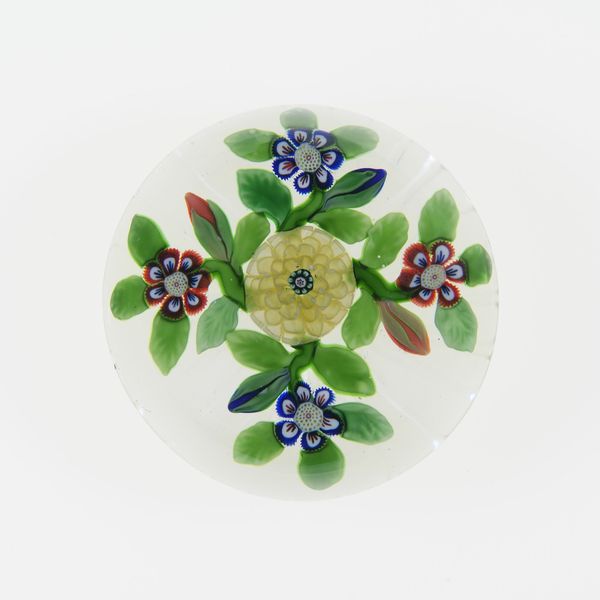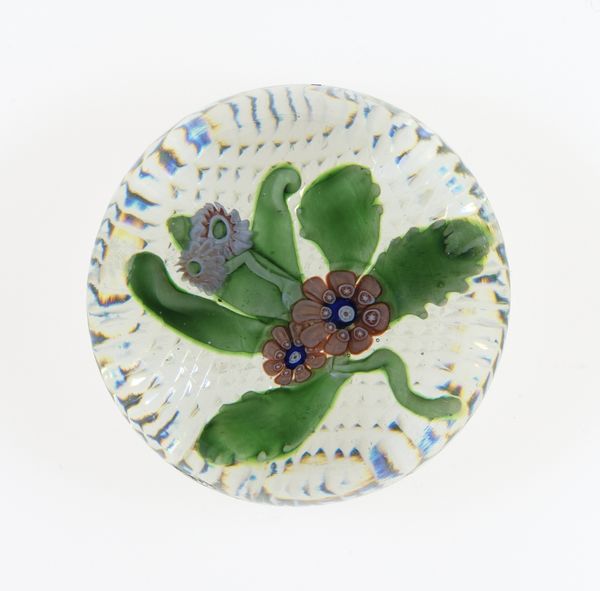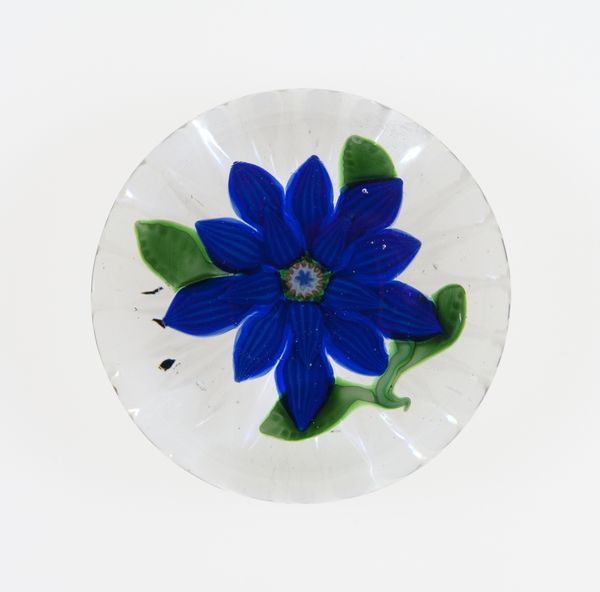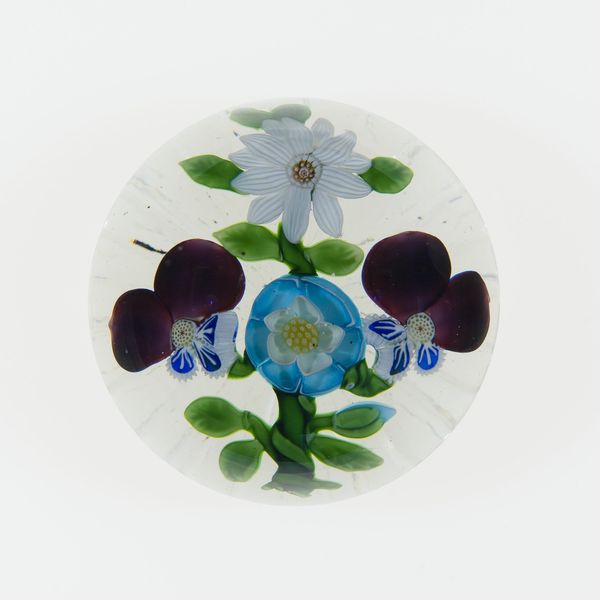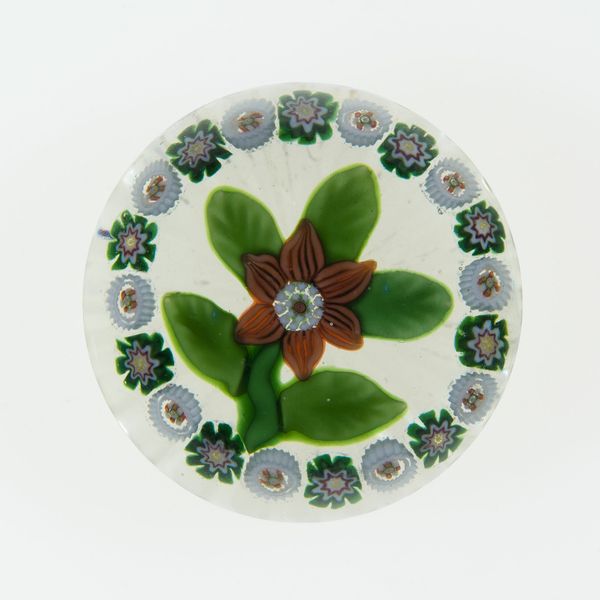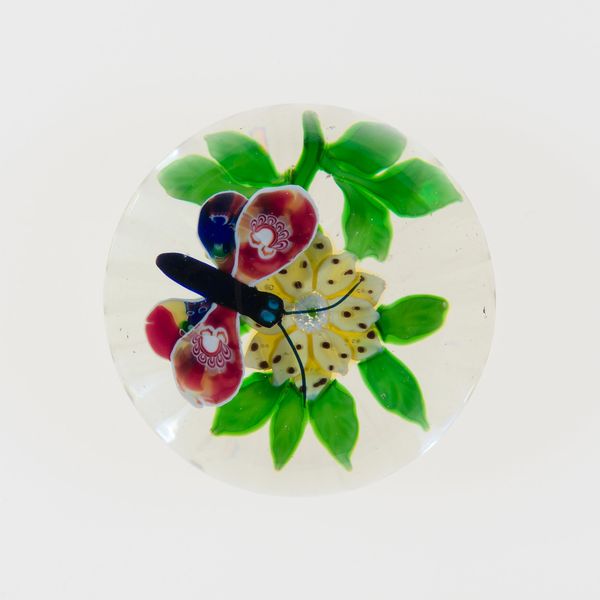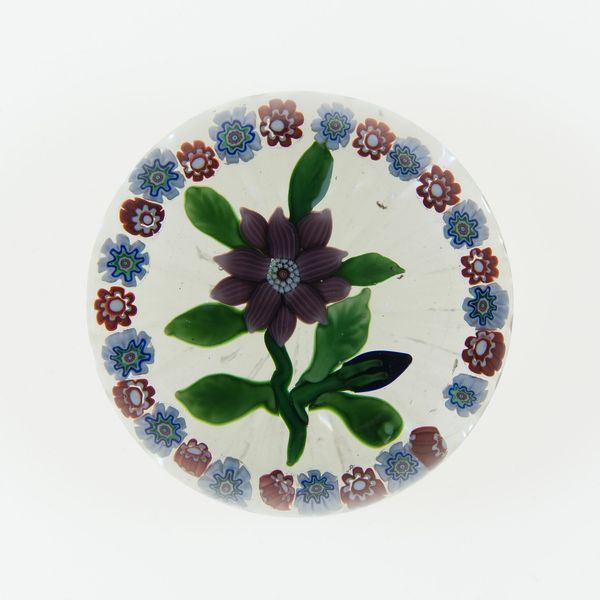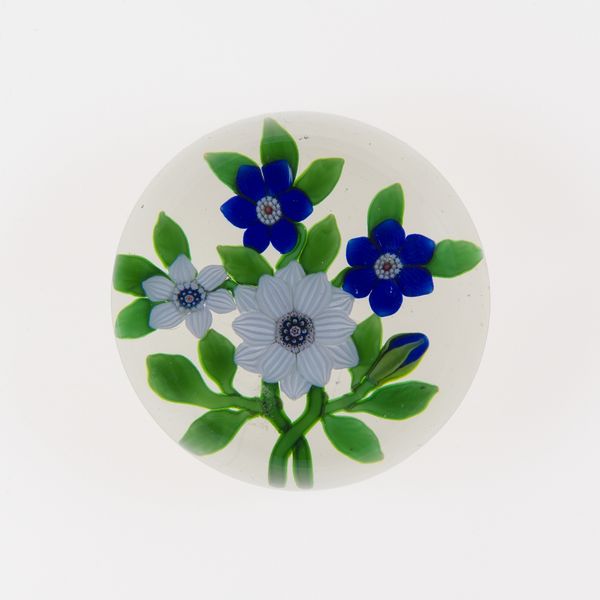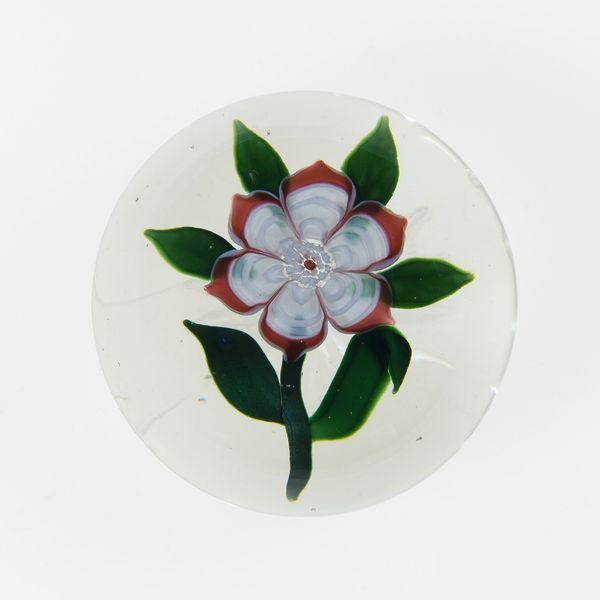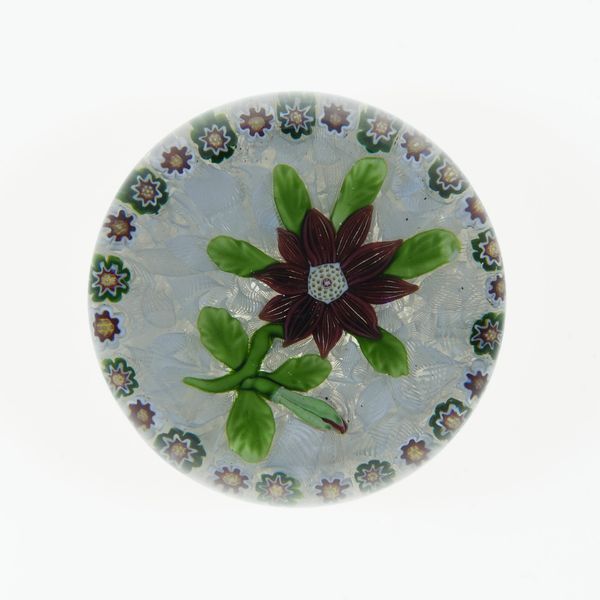
Dimensions: Diam. 5.7 cm (2 1/4 in.)
Copyright: Public Domain
Editor: Here we have a glass paperweight made by Baccarat Glassworks, circa 1848-1855, currently housed at the Art Institute of Chicago. I’m struck by how such detailed artistry has been encapsulated within such a functional object. What stands out to you when you look at this? Curator: The immediate thing I see is the glassblowing process. The skill and labor involved in manipulating molten glass to encase the delicate flower and butterfly design are paramount. It wasn’t merely art for art's sake, but an example of mass production. What does this suggest about the shift in the means of artistic production during that era? Editor: That's fascinating. I hadn’t thought about the labor involved. I guess I was too focused on the pretty design. How would the average person encounter something like this in the mid-19th century? Curator: Exactly! Its function as a paperweight highlights its intended consumption. Glassblowing became a prominent industry where skilled workers were involved in this decorative art. This piece is a product of a market catering to a rising middle class that wanted access to decorative art, challenging the conventional notion of artistic value being exclusively attached to high art. What does the choice of material, glass, say about the era’s values? Editor: So it’s more about the commodification of beauty, rather than purely an artistic endeavor. Thinking about glass itself, it could represent the transparency that the middle class was aiming for, a clean break from aristocracy. That said, isn't there still a huge value in its aesthetic appeal? Curator: Absolutely, its artistic appeal is what drives consumption. However, this is an appeal manufactured through material and process – by laborers creating these objects for profit, which in itself adds value beyond pure aesthetics, in the sense that its origins are entrenched in society, labor and trade. This gives a new dimension to art as a mirror of economic shifts. Editor: This has completely transformed my perception of it. Thank you! It is amazing how a small paperweight can actually reflect the industrial processes that came to define the 19th Century. Curator: Precisely! Seeing it as both art and a product provides insights into the cultural landscape.
Comments
No comments
Be the first to comment and join the conversation on the ultimate creative platform.
